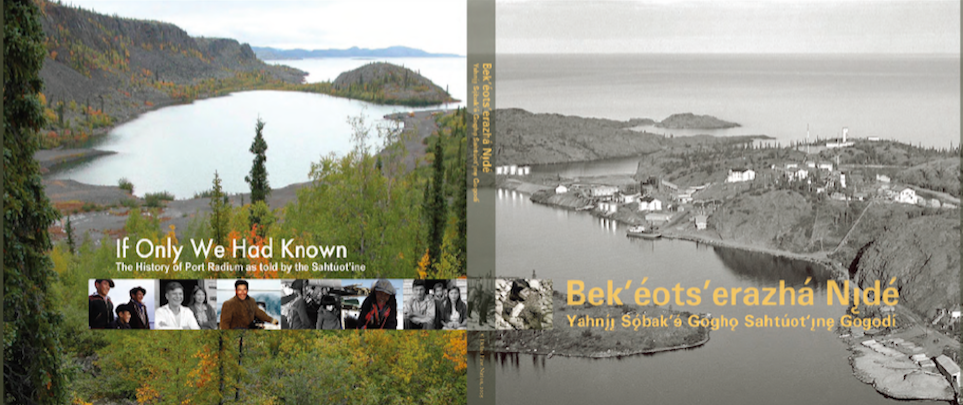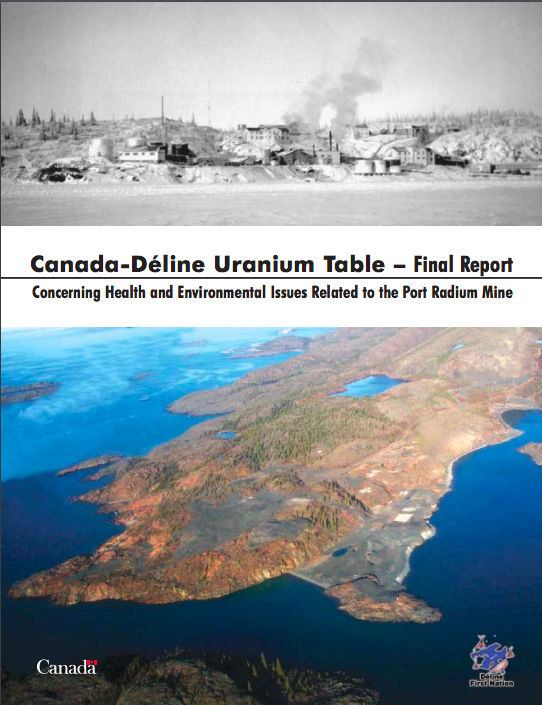Annual Report on Official Languages 2008-2009
Every fiscal year, the Government of the Northwest Territories issues a record of measures taken to implement the Official Languages Act. Each report details developments in both French and Aboriginal language programming. Many programs focus on connecting youth with elders, training teachers, developing curriculum, and providing government services in as many languages as possible.
Access this Resource:
The Government of the Northwest Territories makes reports from the last decade available here: https://www.ece.gov.nt.ca/en/services/francophone-affairs-secretariat/official-languages-annual-reports
Government of the Northwest Territories. Annual Report on Official Languages. Yellowknife: 2009.
Annual Report on Official Languages 2007-2008
Every fiscal year, the Government of the Northwest Territories issues a record of measures taken to implement the Official Languages Act. Each report details developments in both French and Aboriginal language programming. Many programs focus on connecting youth with elders, training teachers, developing curriculum, and providing government services in as many languages as possible.
Access this Resource:
The Government of the Northwest Territories makes reports from the last decade available here: https://www.ece.gov.nt.ca/en/services/francophone-affairs-secretariat/official-languages-annual-reports
Government of the Northwest Territories. Annual Report on Official Languages. Yellowknife: 2008.
Annual Report on Official Languages 2006-2007
Every fiscal year, the Government of the Northwest Territories issues a record of measures taken to implement the Official Languages Act. Each report details developments in both French and Aboriginal language programming. Many programs focus on connecting youth with elders, training teachers, developing curriculum, and providing government services in as many languages as possible.
One excerpt from the 2007 report:
“In September 2003, the Minister Responsible for Official Languages tabled the GNWT’s Response to the Final Report of the Special Committee on the Review of the Official Languages Act. This document addressed, in detail, each recommendation and laid out a course of action over several years. In 2006-2007, a number of these actions were undertaken to further improve GNWT’s ongoing language programs and services.” (4)
Access this Resource:
The Government of the Northwest Territories makes reports from the last decade available here: https://www.ece.gov.nt.ca/en/services/francophone-affairs-secretariat/official-languages-annual-reports
Government of the Northwest Territories. Annual Report on Official Languages. Yellowknife: 2007.
Aboriginal languages in Canada: Emerging trends and perspectives on second language acquisition
This paper uses data from 2001 and previous to present trends in Aboriginal Language use in Canada, namely, an overall drop in conversational ability, a decline in mother tongue population, and a rise in second language acquisition for Aboriginal languages. Additional findings (again, representing Canada but not necessarily smaller populations) include the fact that second language speakers are often younger community members rather than mother tongue population speakers.
For 2001, Norris lists the “North Slave (Hare)” total population as 1,030, with 165 second language speakers. For all speakers under the age of 25, 27% were Dene as a second language speakers – a proportion higher than that of any other age group. Norris identifies a few language groups which are growing due to second language acquisition, such as some Salish languages. While speakers may still be learning North Slavey, Norris labels the language definitively endangered. One sign of endangered language status, according to Norris, is a young population with a growing proportion of second language speakers over mother tongue speakers.
Access this Resource:
Read the full report from Statistics Canada.
Norris, Mary Jane. “Aboriginal languages in Canada: Emerging trends and perspectives on second language acquisition.”Aboriginal languages in Canada: Emerging trends and perspectives on second language acquisition.” Canadian Social Trends. Statistics Canada Catalogue no. 11-008 (2007): 19-28.
Language Nest Evaluation Report
This evaluation of Language Nests in the Northwest Territories is a detailed overview of the Indigenous language immersion programs that were folded into pre-existing licensed day cares and Head Start facilities beginning in 2003. The evaluation process had two steps: first, a workshop with language nest staff from all 18 nest sites (which included at least one from representative from each NWT language region). This was meant to introduce the staff to the purpose of evaluation and incorporate their feedback into the evaluation framework, which covered both process/program delivery and outcome/language acquisition.
The authors identify numerous strengths of the language nest program, primarily surrounding increased awareness of language and culture for participants and communities, willingness to pursue learning, and intergenerational transmission. Children, parents, elders, staff, and communities interacted positively and productively with the language nest program. The programs also encountered challenges, namely: a lack of central administrative support, staffing and turnover, unavailability of training, no core or multi-year funding, incomplete immersion, no curriculum, parental concerns about bilingualism confusing their children, and no evaluative standards. The Language Nest evaluation made numerous recommendations to help mitigate these concerns. At least two nests existed in the Sahtú region, including one in Délı̨nę and one in Fort Good Hope.
Access this Resource:
This report is not currently publically available.
Hume, Sharon, Deborah Rutman, and Carol Hubberstey. Language Nest Evaluation Report. Department of Education, Culture and Employment: Yellowknife, 2006.
If only we had known: The history of Port Radium as told by the Sahtuot'ine
This book-length text’s release coincided with the 2005 report of the Canada-Délı̨nę Uranium Table. It emphasizes the Sahtúot’ı̨nę perspective on Port Radium, contextualized with local history and the personal and community impacts of the uranium mine.

Access this Resource:
This book is available from many Canadian University Libraries (e.g., University of Toronto). ISBN: 9780973772708.
Délı̨nę Uranium Team. If only we had known: The history of Port Radium as told by the Sahtuot’ine. Délı̨nę: Délı̨nę Uranium Team, 2005.
Canada-Deline Uranium Table Final Report
From Abstract:
The Canada-Deline Uranium Table (CDUT) was formed by the Deline First Nation and the federal government in 1999 to address community concerns about the environmental and health impacts of the Port Radium uranium and radium mine, which operated from 1931-1960 and whose activities were supported by workers from Deline. In the 1980s, people in Deline began to learn of the damages to human and environmental health that can be caused by radium and uranium mining, causing community members to fear for the safety of their land and traditional foods and to connect recent cancer suffering in the communtiy to past radium and uranium exposures. The CDUT Final Report describes the studies and activities carried out during Action Plan implementation and presents all associated findings and recommendations. Key findings include: the Port Radium mine was generally in compliance with contemporary regulations relevant to uranium milliing and mining; it is not possible to know for certain if the death or illness of any given individual was directly caused by radiation exposure; and healing activities focused on the affirmation of Dene culture and identity have proven helpful in the aftermath of this problem.
Access this Resource:
The PDF is available online.
Indian and Northern Affairs Canada, Health Canada, Natural Resources Canada, and Délı̨nę First Nation. Canada-Délı̨nę Uranium Table Final Report. Ottawa: Indian and Northern Affairs Canada, 2005.
Sahtú Regional Workshop on the Social Impacts of the Mackenzie Valley Gas Project
This report summarizes proceedings from a Sahtú workshop held in Norman Wells on September 30, 2005. It was the third of three workshops sponsored by the GNWT, held in Inuvik and Fort Simpson. Participants were asked to discuss the positive and negative impacts of the Mackenzie Valley Gas Project in four main areas: employment and income, housing, justice, and health and wellness. They discussed concerns about alcohol and drug use, violent crime, Elder abuse, and the well-being of youth, including youth who are not respectful of Dene traditions.
Access this Resource:
No PDF. A physical copy of this document was found at the University of Alberta Circumpolar Collection: Cameron Library, call number HN 104 S24 2005.
Lutra Associates. Government of the Northwest Territories-Sahtú Regional Workshop on the Social Impacts of the Mackenzie Valley Gas Project. Norman Wells, 2005.
Dene Ways of Respecting the Land and Animals
This project was initiated by the Sahtú Renewable Resources Board to explore the way of life of the Sahtúot’ine and to discuss Dene laws relevant for natural resource management. As the first inhabitants of the Great Bear Lake area, the Sahtúot’ine have certain resource management goals. In order to achieve these goals, government management agencies and industry must be made aware of these goals and begin to understand and respect the way of life of the Sahtúot’ine. The way of life of the Sahtúot’ine reflects their local knowledge, needs and rights as traditional keepers of the land. It is important to note that this may only be relevant to the Sahtúot’ine who reside in the Great Bear Lake area.
Access this Resource:
Modeste, Jane. Dene Ways of Respecting the Land and Animals. Délı̨nę: Délı̨nę First Nation, 2005.
Available from the Ɂehdzo Got’ı̨nę Gots’ę́ Nákedı archives. Contact This email address is being protected from spambots. You need JavaScript enabled to view it. for access and see the Release and User Agreement form on the database home page.
Canada-NWT Cooperation Agreement for French and Aboriginal Languages in the Northwest Territories: Final Evaluation Report
In 2000, the Governments of the NWT and of Canada enacted the five-year Cooperation Agreement for French and Aboriginal Languages in the NWT. This agreement extended federal support to official Aboriginal languages in the NWT as well as French, with $4.35M going directly to Aboriginal communities over five years, and financial support for GNWT language services as well. The independent consultants who authored this report were hired in 2003 in order to evaluate the Agreement’s implementation, operations, progress, strengths, challenges, and recommend changes. The evaluation team conducted a literature review, key informant interviews, focus groups, and case study evaluations.
The evaluators made several practical recommendations following their investigation.
Fist, local leadership must play a role in making sure a project meets community needs and is receiving community support; second, local in-kind contributions and volunteerism must be encouraged to supplement local projects; third, activities must be engaging and locally relevant; and fourth, projects need stable government support, simplified application processes, and equitable treatment to succeed. Overall, the evaluators found that the agreement was well-liked and generally well administered, but needed to emphasize coordination between all levels of government, families, and community leadership. While language coordinators were generally well aware of the agreement and its funding implications, this awareness did not typically extend to the rest of a community or region.
Read the original agreement: https://www.ece.gov.nt.ca/sites/ece/files/resources/nwt_agreement_2016-2020.pdf
Access this Resource:
Terriplan Consultants and Martin Spigelman Research. Canada-NWT Cooperation Agreement for French and Aboriginal Languages in the Northwest Territories, Final Evaluation Report. Government of the Northwest Territories Department of Education, Culture and Employment, and Canadian Heritage, March 2004.



 Phone: 867-374-4040
Phone: 867-374-4040 Email:
Email: